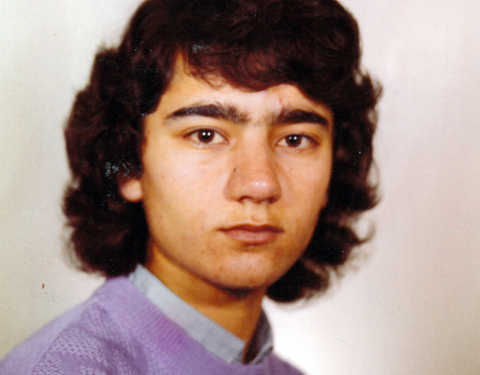M
izgin participated in the early years of the struggle, she took part in important actions and high ranks on the fields of Europe, Small South, Mardin, Botan and Garzan. In the 90s, during important stages of the struggle, there was huge mass mobility. Uprisings had spread to almost all cities and villages. However, a mass work was not carried out in this period and the guerrillas could not be transformed into an organized force. Oranising according to the work, rather than people is the philosophy of our leadership. We can easily see it in Mizgin. While the people needed to be organized, the enemy’s reckless attacks were not cut back and the guerrilla was rising as a fire falling into the barn, she saw the masses of work as a need and she dedicated herself to this work.
Every house she visited, every woman she spoke to, every millitant she organised carries a respectful smile in her rememberance, and a conscientious discomfort in trying to worthy of her work. She taught us how to love art. She managed to become both a warrior and an artist. Wherever she went, she was very sensitive to the issues of culture and art, as well as the importance she attached to the political direction of the struggle. In the guerrilla and in the society, she formed cultural groups and tried to develop them. She is the founder of the Koma Berxwedan group. Art was a language for her. It was a secret connection between life. When we consider art as a means of organizing, we always say that we must not forget the longing for the land, the people’s ancient pain, the purity and the beauties we hold tightly. The friends who lived with her told the people that she loved Garzan. When she went to Kember and started singing ’Five minarets in Bitlis, we became a choir. Everyone knows how she loved to listen to the winds of Zoveser blowing from the summit, how she talked to the stars, shared the joys of an action like a child, how she could not bare the sadness of a comrade and tried to multiplied their joy. She became a page in the stories of her comrades and took pages in to her own story. The bridge she had established among her friends stems from her artistic approach to relationships. It was possible to find the unrivaled unification of art in relations with the friend of Mizgin. As mentioned, she did not treat art in narrow patterns like in real socialism, nor was it detaching art from the reality of life. She used it to cover the gaps between human and people. While the preferences are listed, everyone knows that she did not see art as a tool, but rather it is one of the most basic ways of attaining it.
While the enemy was enforcing the policy of incarceration of the guerrillas on the mountains, detaching people from their villages and deeming it right treat the people as it wished, Mizgin was with the society at the time. This alone wasted all of the enemys heinous tactics, because her presence alone had affected them. Her success made her a target to the extent where the enemy dropped every other policy and focused mainly on Mizgin., almost tied to the success of his policy to catch up with his friend, Mizgin. They tried to scare her by telling the society what they would do to Mizgin when they found her. Despite this, there was no power big enough to divide Mizgin from the struggle. The enemy surrounded the house where Mizgin was staying; the aim was to capture her alive in order to ruin the reputation she had in the name of freedom and organization and to break all hopes. Resistance was the antidote to dishonor. The history of the struggle taught this moment to all the militants, it is a very sharp line. And this attitude is an indication of how free life is understood. Honor is taught in the moment of war.
Comrade Mizgin tells the homeowner to take her child and go to the next room and to close the windows tightly because she didn’t want the enemy to feel satisfied. The homeowner couldn’t understand what Mizgin wanted to do but complied. At the end of the clashes, Mizgin shot herself. The earth was not the last stop of this journey, it was the return. We exist with what we do, think, and say in that short period of time that we have squeezed between coming and going. We are honored to have come from the land, by living a dignified and beautiful life. This is the secret of life. The ones who have reached this are still travelling from tongue to tongue, heart to heart. Instead of being known from books, they are known from the dispair they have left on the faces of people. Journeys are told. Sometimes you can feel close enough to touch them, and sometimes you see your companion standing beside you even though you haven’t seen the story.
As one scene closes, our world is carrying the peace and the burden of knowing the Comrade. And even if we are only learning half of the story, it is difficult to get to know our people who do not grow old with speed of time.
The children of my people are collecting hero stories for a long time. Our sufferings are the pains of reaching Kurdistan. We all hold from one end of this love, some few, some many. We’il live as long as we keep holding on. But there is no ignorance in this love. Because Kurdistan is the walk to righteousnous.
Name Surname: Gurbet AYDIN
Cod Name: Mizgin
Birth Place and Date : 1962, Batman
Martyrdom Place and Date: 11 May 1992, Tatvan







